-
 Bitcoin
Bitcoin $83,070.5743
1.36% -
 Ethereum
Ethereum $1,846.3042
2.43% -
 Tether USDt
Tether USDt $0.9999
-0.02% -
 XRP
XRP $2.0963
0.60% -
 BNB
BNB $608.2199
1.22% -
 Solana
Solana $125.8573
0.22% -
 USDC
USDC $0.9999
-0.02% -
 Dogecoin
Dogecoin $0.1694
2.47% -
 Cardano
Cardano $0.6718
2.62% -
 TRON
TRON $0.2355
1.18% -
 Toncoin
Toncoin $4.1426
5.41% -
 Chainlink
Chainlink $13.6470
2.68% -
 UNUS SED LEO
UNUS SED LEO $9.1865
0.93% -
 Stellar
Stellar $0.2663
0.74% -
 Avalanche
Avalanche $19.3694
3.55% -
 Shiba Inu
Shiba Inu $0.0...01272
4.45% -
 Sui
Sui $2.3128
1.61% -
 Hedera
Hedera $0.1642
1.69% -
 Polkadot
Polkadot $4.1212
2.20% -
 Litecoin
Litecoin $84.3399
-0.44% -
 MANTRA
MANTRA $6.2758
0.67% -
 Bitcoin Cash
Bitcoin Cash $308.1896
3.51% -
 Bitget Token
Bitget Token $4.5876
1.77% -
 Dai
Dai $0.9999
0.00% -
 Ethena USDe
Ethena USDe $0.9997
-0.09% -
 Pi
Pi $0.7183
1.48% -
 Hyperliquid
Hyperliquid $13.4222
7.75% -
 Monero
Monero $217.7771
0.39% -
 Uniswap
Uniswap $6.0515
1.94% -
 Aptos
Aptos $5.2993
1.42%
How does the size and layout of the mining motherboard affect the construction of mining machines?
The right mining motherboard impacts GPU count, power efficiency, and cooling; choose wisely to avoid bottlenecks and maximize profitability.
Mar 26, 2025 at 08:36 pm
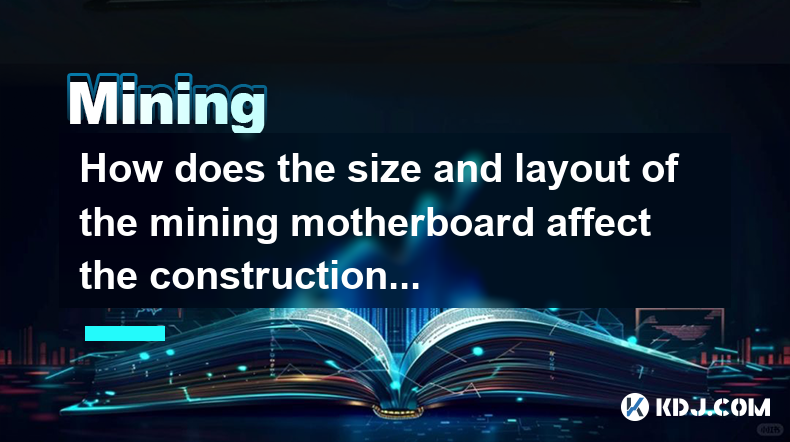
Motherboard Selection: A Crucial Step in Mining Rig Construction
The size and layout of a mining motherboard are critical factors influencing the construction and efficiency of a mining machine. Choosing the right motherboard significantly impacts the number of GPUs you can install, the overall power consumption, and the ease of assembly and maintenance. A poorly chosen motherboard can lead to bottlenecks, overheating, and ultimately, reduced profitability.
Understanding Motherboard Size and its Implications
The physical size, typically expressed in ATX, Micro-ATX, or Mini-ITX form factors, directly dictates the available space for components. Larger motherboards (ATX) generally offer more expansion slots, allowing for the integration of a greater number of GPUs. Conversely, smaller motherboards (Mini-ITX) are more compact, suitable for smaller mining rigs but limiting the number of GPUs that can be accommodated. This directly affects the overall hashing power of your mining operation.
The Importance of GPU Slot Placement and Spacing
The arrangement of PCIe slots on the motherboard is paramount. Optimal spacing between slots is essential for proper airflow and prevents overheating, especially when using high-power GPUs. Insufficient spacing can lead to thermal throttling, reducing the efficiency of your mining operation. Motherboards with strategically placed slots, allowing for efficient cooling solutions, are highly desirable.
Power Delivery and its Influence on Motherboard Choice
Mining involves high power consumption. The motherboard's power delivery system (VRM) must be robust enough to handle the demands of multiple GPUs. Insufficient power delivery can lead to instability, crashes, and potential damage to the hardware. Look for motherboards with high-quality VRMs and sufficient power phases to ensure stable operation under heavy load. The number and type of power connectors are also crucial factors to consider.
Chipset Considerations: Impact on Performance and Compatibility
The chipset on the motherboard plays a crucial role in determining the overall performance and compatibility with different components. A high-bandwidth chipset is essential for efficient data transfer between the CPU, GPUs, and memory. This is critical for maximizing the mining efficiency. Ensure compatibility with your chosen GPUs and other peripherals before purchasing the motherboard.
BIOS and Firmware: Customization for Mining Operations
The motherboard's BIOS and firmware offer customization options that can significantly impact mining performance. Adjusting settings such as PCIe lanes and power limits can optimize the operation of your GPUs. Some motherboards offer specialized BIOS settings tailored for mining, simplifying the optimization process. Understanding these settings is crucial for maximizing profitability.
Cooling Solutions and Motherboard Design
The motherboard's layout significantly influences the effectiveness of your cooling strategy. Strategic placement of components allows for better airflow and reduces the risk of overheating. Consider motherboards with open layouts that facilitate the installation of fans and other cooling solutions. Proper cooling is paramount for maintaining the longevity and stability of your mining hardware.
Expandability and Future-Proofing Your Mining Rig
Consider the expandability of the motherboard. The number of PCIe slots directly impacts your ability to scale your mining operation in the future. Choosing a motherboard with extra PCIe slots allows for future upgrades and expansion, ensuring the longevity of your investment.
Step-by-Step Guide: Selecting a Mining Motherboard
- Identify your GPU needs: Determine the number of GPUs you plan to use. This directly influences the motherboard size and the number of PCIe slots required.
- Choose the appropriate form factor: Select an ATX motherboard for larger rigs or a Micro-ATX/Mini-ITX for smaller setups, based on your GPU count and space constraints.
- Check PCIe slot spacing: Ensure sufficient spacing between PCIe slots for proper airflow and cooling. Poor spacing can lead to overheating and performance issues.
- Verify power delivery capabilities: Confirm that the motherboard's VRM can handle the combined power draw of all your GPUs. Insufficient power can cause instability and damage.
- Check chipset compatibility: Ensure compatibility with your chosen GPUs and other components. A high-bandwidth chipset is essential for optimal performance.
- Review BIOS/firmware features: Look for motherboards with customizable BIOS settings for fine-tuning mining parameters.
- Assess cooling considerations: Choose a motherboard with a layout that facilitates efficient cooling solutions.
Common Questions and Answers
Q: What is the most important factor to consider when choosing a mining motherboard?
A: The most important factor is the power delivery system (VRM) and the number and spacing of PCIe slots, ensuring sufficient power and cooling for your GPUs.
Q: Can I use any motherboard for mining?
A: While technically possible, using a standard motherboard not designed for mining can lead to instability, overheating, and reduced efficiency. Motherboards specifically designed for mining often have better power delivery and PCIe slot layouts.
Q: What are the benefits of using a larger motherboard for mining?
A: Larger motherboards, like ATX, typically offer more PCIe slots, allowing you to use more GPUs and increase your hashing power. However, they also require more space and might be more expensive.
Q: How does the chipset affect mining performance?
A: The chipset determines the bandwidth and communication speed between the CPU, GPUs, and memory. A high-bandwidth chipset is crucial for maximizing mining efficiency.
Q: What is the significance of BIOS settings in mining?
A: BIOS settings allow you to optimize the performance of your GPUs by adjusting parameters such as power limits and PCIe lane configurations. This is crucial for maximizing profitability.
Q: How important is cooling when choosing a mining motherboard?
A: Cooling is absolutely critical. A motherboard's layout should facilitate efficient airflow and allow for the easy installation of cooling solutions to prevent overheating and ensure stable operation.
Disclaimer:info@kdj.com
The information provided is not trading advice. kdj.com does not assume any responsibility for any investments made based on the information provided in this article. Cryptocurrencies are highly volatile and it is highly recommended that you invest with caution after thorough research!
If you believe that the content used on this website infringes your copyright, please contact us immediately (info@kdj.com) and we will delete it promptly.
- MIND of Pepe (MIND) Presale Approaching $8M as Community Growth
- 2025-04-01 14:10:12
- Top 10 Best Cryptocurrencies to Buy in 2025. Expert Picks with High Growth Potential
- 2025-04-01 14:10:12
- Cantina Royale Has Officially Announced Its Integration into the BoomLand Ecosystem
- 2025-04-01 14:05:11
- A major price prediction for XRP
- 2025-04-01 14:05:11
- Qubetics (TICS), SUI, and Mantra (2025): 3 Crypto ICOs to Invest in for 2025
- 2025-04-01 14:00:11
- Momentum Emerges from Stealth Mode to Launch the World's First ve(3,3) Decentralized Exchange (DEX) on the Sui Blockchain
- 2025-04-01 14:00:11
Related knowledge
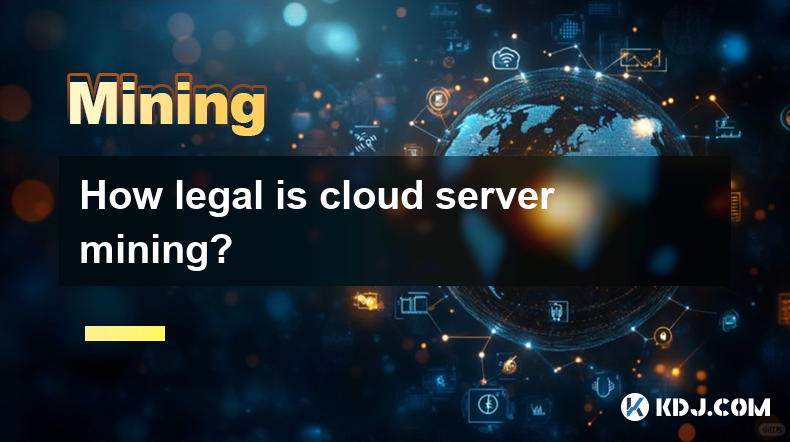
How legal is cloud server mining?
Apr 01,2025 at 08:08am
Cloud server mining has become an increasingly popular method for individuals and companies to participate in cryptocurrency mining without the need for expensive hardware and high electricity costs. However, the legality of cloud server mining can be a complex issue, as it varies by jurisdiction and depends on several factors. This article will explore...
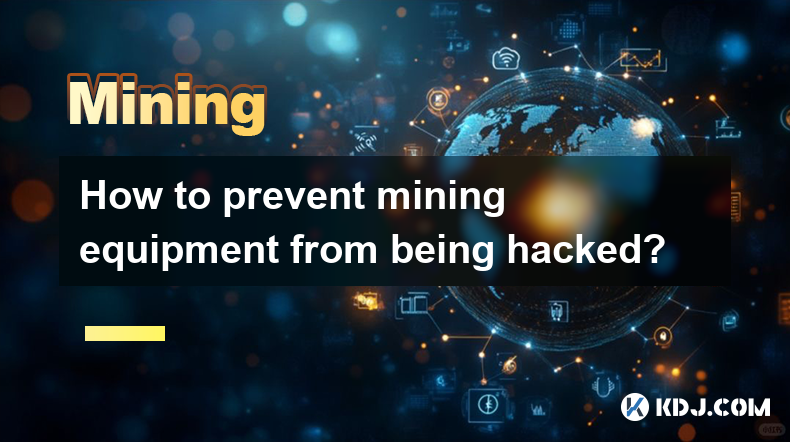
How to prevent mining equipment from being hacked?
Apr 01,2025 at 06:22am
Understanding the ThreatsCryptocurrency mining, while potentially lucrative, exposes your equipment to various cyber threats. These threats range from simple malware infections that steal your mining profits to sophisticated attacks that hijack your entire operation. Understanding these threats is the first step in effective protection. This includes r...
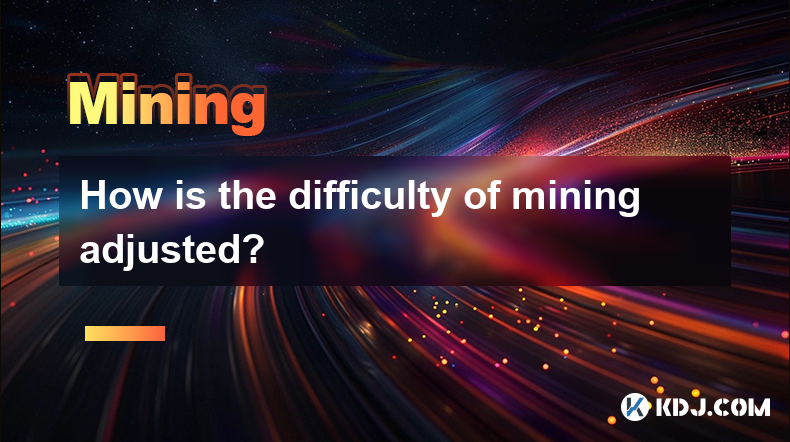
How is the difficulty of mining adjusted?
Apr 01,2025 at 07:14am
Understanding Bitcoin's Difficulty Adjustment MechanismBitcoin's mining difficulty is a crucial element ensuring the network's stability and security. It dynamically adjusts to maintain a consistent block generation time, approximately every 10 minutes. This adjustment prevents miners with overwhelming computing power from monopolizing block creation a...
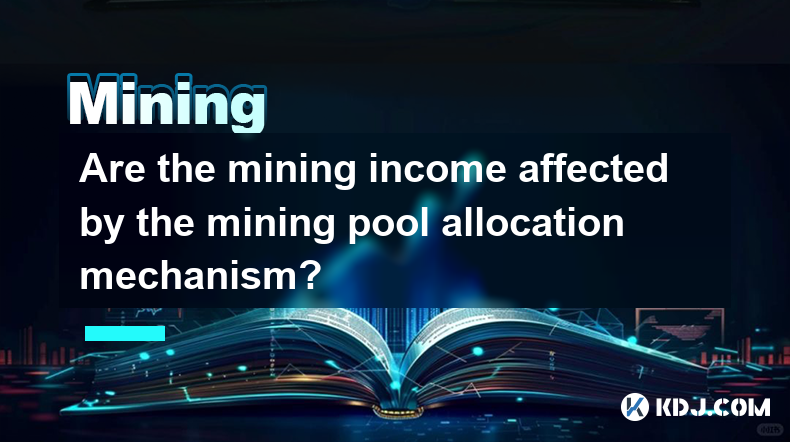
Are the mining income affected by the mining pool allocation mechanism?
Mar 31,2025 at 05:49pm
Understanding Mining Pool Allocation MechanismsMining pools aggregate the hashing power of many miners to increase the chances of successfully mining a block. The reward for successfully mining a block is then distributed among the pool's participants based on their contribution – usually measured in shares submitted. The allocation mechanism determine...

How does mining difficulty affect the profit?
Apr 01,2025 at 12:00pm
Understanding Mining Difficulty and its Impact on ProfitabilityMining difficulty in the context of cryptocurrencies refers to how computationally hard it is to solve the cryptographic puzzle required to add a new block to the blockchain. This difficulty is automatically adjusted by the network to maintain a consistent block time, typically around 10 mi...
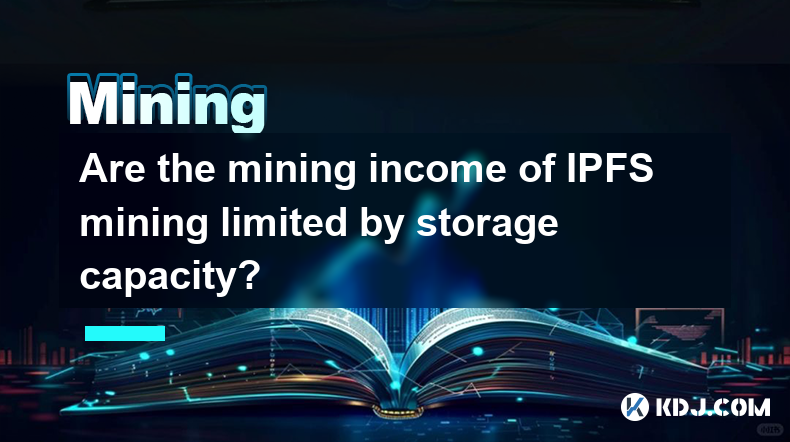
Are the mining income of IPFS mining limited by storage capacity?
Apr 01,2025 at 12:00am
Understanding IPFS Mining and its Revenue ModelIPFS (InterPlanetary File System) mining, unlike Bitcoin mining which relies on computational power, focuses on providing storage and bandwidth to the network. Miners earn rewards by making their storage available and contributing to the overall health and efficiency of the decentralized network. The amoun...

How legal is cloud server mining?
Apr 01,2025 at 08:08am
Cloud server mining has become an increasingly popular method for individuals and companies to participate in cryptocurrency mining without the need for expensive hardware and high electricity costs. However, the legality of cloud server mining can be a complex issue, as it varies by jurisdiction and depends on several factors. This article will explore...

How to prevent mining equipment from being hacked?
Apr 01,2025 at 06:22am
Understanding the ThreatsCryptocurrency mining, while potentially lucrative, exposes your equipment to various cyber threats. These threats range from simple malware infections that steal your mining profits to sophisticated attacks that hijack your entire operation. Understanding these threats is the first step in effective protection. This includes r...

How is the difficulty of mining adjusted?
Apr 01,2025 at 07:14am
Understanding Bitcoin's Difficulty Adjustment MechanismBitcoin's mining difficulty is a crucial element ensuring the network's stability and security. It dynamically adjusts to maintain a consistent block generation time, approximately every 10 minutes. This adjustment prevents miners with overwhelming computing power from monopolizing block creation a...

Are the mining income affected by the mining pool allocation mechanism?
Mar 31,2025 at 05:49pm
Understanding Mining Pool Allocation MechanismsMining pools aggregate the hashing power of many miners to increase the chances of successfully mining a block. The reward for successfully mining a block is then distributed among the pool's participants based on their contribution – usually measured in shares submitted. The allocation mechanism determine...

How does mining difficulty affect the profit?
Apr 01,2025 at 12:00pm
Understanding Mining Difficulty and its Impact on ProfitabilityMining difficulty in the context of cryptocurrencies refers to how computationally hard it is to solve the cryptographic puzzle required to add a new block to the blockchain. This difficulty is automatically adjusted by the network to maintain a consistent block time, typically around 10 mi...

Are the mining income of IPFS mining limited by storage capacity?
Apr 01,2025 at 12:00am
Understanding IPFS Mining and its Revenue ModelIPFS (InterPlanetary File System) mining, unlike Bitcoin mining which relies on computational power, focuses on providing storage and bandwidth to the network. Miners earn rewards by making their storage available and contributing to the overall health and efficiency of the decentralized network. The amoun...
See all articles























































































